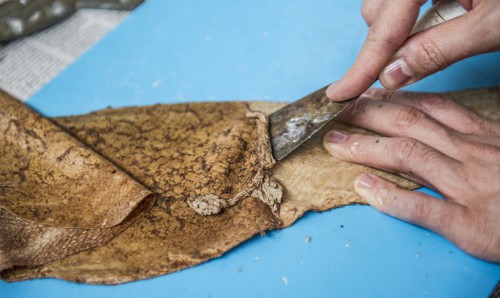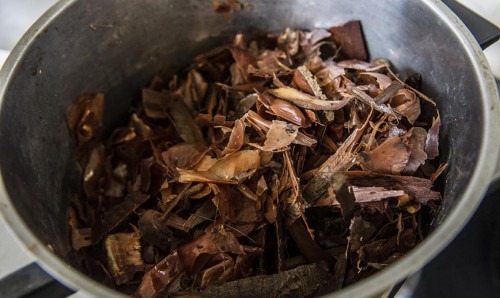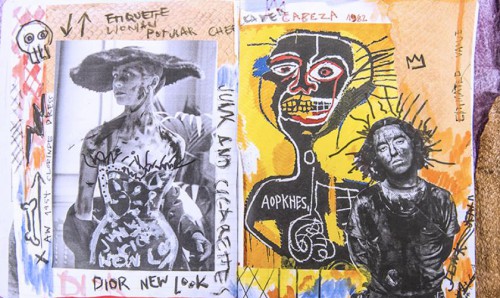
NORDIC FISHSKIN CRAFT WORKSHOP
Workshop in collaboration with Atlantic Leather at the Icelandic Textile Centre with the participation of students from Iceland University of Art, Royal Danish Academy of Arts, Boras University, Aalto University and C St Martins College of Art. Made possible thanks to the generous funding from THE NORDIC CULTURE FUND. OPSTART. SOCIETY OF DYERS AND COLORISTS. Tutors: Lotta Rhame Swedish traditional fish skin tanner. Elisa Palomino CSM BA Fashion Print pathway leader.
The Nordic fish skin leather tradition will be preserved and developed in a new Nordic network of skilled craftsmen and Fashion Higher Education students. The first step has been taken in Iceland in March 2018. The network has arranged a Nordic Fish leather craft workshop at the Icelandic tannery Atlantic Leather, who has been turning fish skin into highly sustainable leather since 1994. Their production of fish skin leather is based on taking waste from the food industry. Students were able to interact with the fish leather production and fish skin craftsmen which have shared their know-how. The long perspective for the network will be the knowledge exchange and to build and develop a professional and cultural network on Fish Leather craft innovation. The target groups are Nordic professional fish skin craftsmen and Fashion students from top Nordic Universities in Iceland, Sweden, Finland, Denmark and UK.
The group was briefed at an introductory session providing inspiration, basic information regarding ethics and sustainability of fish skin leather and suggestions for further reading and research. There were lectures on fish skin artefacts at international collections. The main activity was a training workshop on traditional methods of tanning and dyeing for fish skin with Lotta Rahme.
From conducting tutorials with the students, we could verify that a lot of the students began to replace original leather choices with alternatives such fish skin. During the tutorials we suggest them to consider these values further, encouraging innovative design solutions in to their fish skin samples.
Embedding ethical and sustainable values in fashion education needs to be seen as a natural choice rather than an optional choice.
The results were very positive, students took a very personal journey to interpret fish skin leather linked to their own Nordic backgrounds.
Using Richard Sennett’s proposal that the embodied skills of craftsmanship provides insight into the skills we required to improve our social and environmental relations, Fish skin leather can be considered a tool to develop changes in our mind sets in lights of the environmental contexts of fashion.























